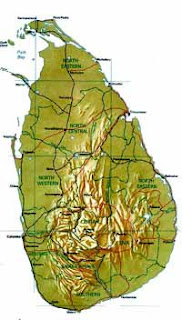Wild parks in Sri lanka
Sri Lanka has a rich and exotic variety of wildlife and a long tradition of conservation rooted in its 2,230 year old Buddhist civilization. The following are the most important sanctuaries in terms of attractions, accessibility and availability of facilities.
Sri Lanka has a rich and exotic variety of wildlife and a long tradition of conservation rooted in its 2,230 year old Buddhist civilization. The following are the most important sanctuaries in terms of attractions, accessibility and availability of facilities.
| Animal Sanctuaries The animals to be seen in Sri Lanka's national parks include elephant, leopard, sloth bear, sambhur, deer and monkeys, wild buffalo, wild boar (pig), porcupine, ant-eater, civet cat, jackal, mongoose, loris (unique to sri Lanka) several varieties of lizards, squirrels, reptiles and amphibians. Each park however has its own specialties. Life style of Elephants Turtles |  |
| | Yala (Ruhuna) National Park Situated 309 km. south of Colombo, Yala is approximately 1,259 sq.km. in extent and is located in the southeastern corner of the island. Its northern boundaries border on the Lahugala Elephant Sanctuary and it has the added bonus of a scenic ocean frontage. The terrain is varied flat plains alternating with rocky outcrops. The vegetation ranges from open parkland to dense jungle. Water holes, small lakes, lagoons and streams provide water for the animals and birds. The specialty here is the large numbers of elephants. |
| Wilpattu National Park Situated 176 km. north of Colombo, Wilpattu is approximately 1,908 sq.km. in extent. It has a dense jungle cover which makes it a more exciting park where animals have to be tracked. There are numerous delightful little lakes - known as villus - and the leopard and sloth bear are the specialty rather than elephants. | |
| | Maduru Oya National Park The Maduru Oya National Park is located in the Dry Zone and is 300 k.m. away from Colombo and 58,849 hectares in extent. A wide variety of wildlife including some endemic birds species and reptiles are found here. Maduru Oya is rich in ancient ruins found in different places and its southern parts provide veddhas, indigenous people their living environment. Endemic purple monkey is among the important animal species that can be seen in addition to Sambhur, a member of the cat family etc. There is some endemic avifauna also found within this Park. |
| Gal Oya National Park Situated at Inginiyagala, the Gal Oya National Park is 314 km. from Colombo and is most renowned for its elephant population. | |
| Bundala National Park Bundala National Park is the latest addition to the National Parks and is situated 260 km. away from Colombo. All species of waterbirds resident in the country and the migrant birds inhabit this Park. | |
| Horton Plains National Park The Horton Plains National Park is the only National Park situated in the Hill Country and falls within the Nuwara Eliya district and is 200 km. away from Colombo. Panoramic scenic beauty of the Hill Country could be witnessed within the Park. The famous `Worlds End' is a major attraction within the Park. Endemic slender loris and endemic purple monkey are among the important animal species that could be seen in addition to sambhur, a member of the cat family etc. There is some endemic avifauna also found within this Park. | |
| | Uda Walawe National Park Situated 170 km. South East of Colombo the Uda Walawe National Park is approximately 30,821 hectares in extent. This Park which lies within the Ratnapura and Monaragala Districts acts as the catchment to the Uda Walawe Reservoir and is located in the Dry Zone. This Park comprises grasslands and thorn scrubs and many valuable species of trees are found within it. Large herds of Elephants and Deer species such as spotted Deer, Sambhur, Barking deer and Langur, Wild Boar, Water Buffalo, Jackal are some of the prominent wild animals found in this Park and a variety of avifauna is seen. |
| Wasgamuwa National Park Situated approximately 200 km. away from Colombo, the Wasgamuwa National Park lies within the Polonnaruwa and Matale Districts and have the Mahaweli river and Amban river as its eastern and western boundaries. Tropical intermediate dry mixed evergreen forest predominates its environment. | |















